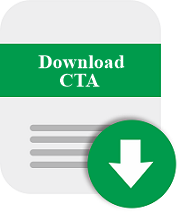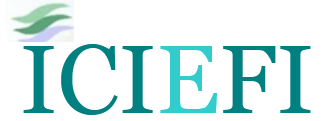The Effect of Macroeconomic and Bank-Specific Variables to Risk-Taking of Islamic Bank in Indonesia
Abstract
This study aims to delineate the relationship between macroeconomic factors and bank-specific variables to risk-taking of Islamic bank. Adopting panel co-integration approach, this study posits macroeconomic and bank-specific factors as exogenous variables consisting to interest rate, exchange rate, inflation, bank size and equity to asset ratio. Risk-taking as endogenous variable has proxies non-performing loan or financing and bankruptcy risk. By using quarterly data from 2010-Q4 to 2017-Q4, this study finds the risk-taking behavior of all banks has long-term relationship with macroeconomic factors. In terms of bank specified characteristic, bank size becomes substantial factor for the bank’s risk mitigation. When the samples are grouped based on Islamic bank’s size, the big size of Islamic bank has no long-term co-integration to macroeconomic variables. As opposed to that, the middle and small size of Islamic bank have long-term relationship to macroeconomics factors and all macroeconomic variables affect the risk-taking of Islamic bank. It concludes that the medium and small size of Islamic banks are more vulnerable from external shock.
Keywords
Full Text:
PDFReferences
Abedifar, P., Molyneux, P., & Tarazi, A. (2013). Risk in islamic banking. Review of Finance, 17(6), 2035–2096. https://doi.org/10.1093/rof/rfs041
Adebola, S.S., Wan Yusoff, W.S., & Dahalan, J. (2011). An Ardl Approach To the Determinants of Non- Performing Loans in Islamic Banking System in Malaysia. Kuwait Chapter of Arabian Journal of Business and Management Review, 1(2), 20–30.
Ali, S.S. (2007). Financial Distress and Bank Failure: Lessons from Closure of Ihlas Finans in Turkey. Islamic Economic Studies, 14(1), 1–52.
Azhar Rosly, S., & Ashadi Mohd. Zaini, M. (2008). Risk-return analysis of Islamic banks’ investment deposits and shareholders’ fund. Managerial Finance, 34(10), 695–707. https://doi.org/10.1108/03074350810891010
Ben Selma Mokni, R., Echchabi, A., Azouzi, D., & Rachdi, H. (2014). Risk management tools practiced in Islamic banks: evidence in MENA region. Journal of Islamic Accounting and Business Research, 5(1), 77–97. https://doi.org/10.1108/JIABR-10-2012-0070
Brooks, C. (2008). Introductionary Econometrics for Finance. United Kingdom : Cambridge University Press.
Chazi, A., & Syed, L.A.M. (2010). Risk exposure during the global financial crisis: the case of Islamic banks. International Journal of Islamic and Middle Eastern Finance and Management, 3(4), 321–333. https://doi.org/10.1108/17538391011093261
Ernst and Young. (2016). World Islamic Banking Competitiveness Report 2016.
Fakhrunnas, F., Dari, W., & Mifrahi, M.N. (2018). Macroeconomic Effect and Risk-taking Behavior in A Dual Banking System. Economic Journal of Emerging Market, 10(2).
Ibrahim, M.H., & Rizvi, S.A.R. (2017). Do we need bigger Islamic banks? An assessment of bank stability. Journal of Multinational Financial Management, 40, 77–91. https://doi.org/10.1016/j.mulfin.2017.05.002
Kanten, P., & Ulker, F. (2013). Turkish Experience in Bank Shareholders’ Fraud and Bank Failure: Imar Bank and Ihlas Finans House. A Multidisciplinary Journal of Global Macro Trends, 2(4), 144–160.
Karim, N.A., Al-Habshi, S.M.S.J., & Abduh, M. (2016). Macroeconomics Indicators and Bank Stability: A Case of Banking in Indonesia. Buletin Ekonomi Moneter Dan Perbankan, 18(4), 431–448.
Khan, T., & Ahmed, H. (2001). Risk Management : An Analysis of Issue in Islamic Financial Industry. Occasional Paper, 5, 1–192.
Klein, N. (2013). Non-Performing Loans in CESEE : Determinants and Impact on Macroeconomic Performance. IMF Working Paper, 27.
Lin, H.-Y., Farhani, N.H., & Koo, M. (2016). The Impact of Macroeconomic Factors on Credit Risk in Conventional Banks and Islamic Banks: Evidence from Indonesia. International Journal of Financial Research, 7(4). https://doi.org/10.5430/ijfr.v7n4p105
Louhichi, A., & Boujelbene, Y. (2016). Credit risk, managerial behaviour and macroeconomic equilibrium within dual banking systems: Interest-free vs. interest-based banking industries. Research in International Business and Finance, 38(December 2017), 104–121. https://doi.org/10.1016/j.ribaf.2016.03.014
Nadeem, M.E., & Khalil, B. (2014). A Review of Risk Management Theory in Commercial and Islamic Banks. International Journal of Management and Organization Studies, 3(4).
Nicolo, G.De. (2000). Size, charter value and risk in banking: an international perspective. International Finance Discussion Papers.
Nursechafia, & Abduh, M. (2014). The Susceptibility of Islamic Banks’ Credit Risk Towards Macroeconomic Variables. Journal of Islamic Finance, 3(1), 23–37. https://doi.org/10.12816/0031476
Otoritas Jasa Keuangan. (2018). Statistik Perbankan Indonesia
Pedroni, P. (2000). Fully Modified Ols for Heterogeneous Cointegrated Panels. Advances in Econometrics, 15, 93–130.
Pedroni, P. (2004). Panel Cointegration: Asymptotic And Finite Sample Properties Of Pooled Time Series Tests With An Application To The Econometric Press, Vol. No. 3, pp . Econometric Theory, 20, 597–625. https://doi.org/10.1017/S0266466604203073
Ranjan, R., & Dhal, S.C. (2003). Non-Performing Loans and Terms of Credit of Public Sector Banks in India: An Empirical Assessment. Reserve Bank of India Occasional Papers (Vol. 24). https://doi.org/10.1080/08039410.1994.9665960
Rosylin, M.Y., & Bahlous, M. (2013). Islamic banking and economic growth in GCC & East Asia countries. Journal of Islamic Accounting and Business Research, 4(2), 151–172. https://doi.org/10.1108/JIABR-07-2012-0044
Trad, N., Trabelsi, M.A., & Goux, J.F. (2017). Risk and profitability of Islamic banks: A religious deception or an alternative solution? European Research on Management and Business Economics, 23(1), 40–45. https://doi.org/10.1016/j.iedeen.2016.09.001
Xiong, J.X., Ibbotson, R.G., Idzorek, T.M., & Chen, P. (2010). The equal importance of asset allocation and active management. Financial Analysts Journal, 66(2), 22–30. https://doi.org/10.2469/faj.v66.n2.7
Zarrouk, H., Ben Jedidia, K., & Moualhi, M. (2016). Is Islamic bank profitability driven by same forces as conventional banks? International Journal of Islamic and Middle Eastern Finance and Management, 9(1), 46–66. https://doi.org/10.1108/IMEFM-12-2014-0120
Zulkhibri, M., Naiya, I., & Ghazal, R. (2015). Strcutural Change and Economic Growth in Selected Emerging Economics. International Journal of Development Issues, 14 (2), 98–116. https://doi.org/10.1108/MBE-09-2016-0047
DOI: https://doi.org/10.18196/ijief.129
Refbacks
- There are currently no refbacks.
Copyright (c) 2019 IJIEF: International Journal of Islamic Economics and Finance

This work is licensed under a Creative Commons Attribution-ShareAlike 4.0 International License.
International Journal of Islamic Economics and Finance (IJIEF)
International Program for Islamic Economics and Finance
Department of Economics
Faculty of Economics and Business
Universitas Muhammadiyah Yogyakarta
Pascasarjana Building, Ground Floor
Jl. Brawijaya (Ringroad Selatan), Kasihan, Bantul
D.I. Yogyakarta 55183, INDONESIA
Official email: ijief@umy.ac.id












1.jpg)